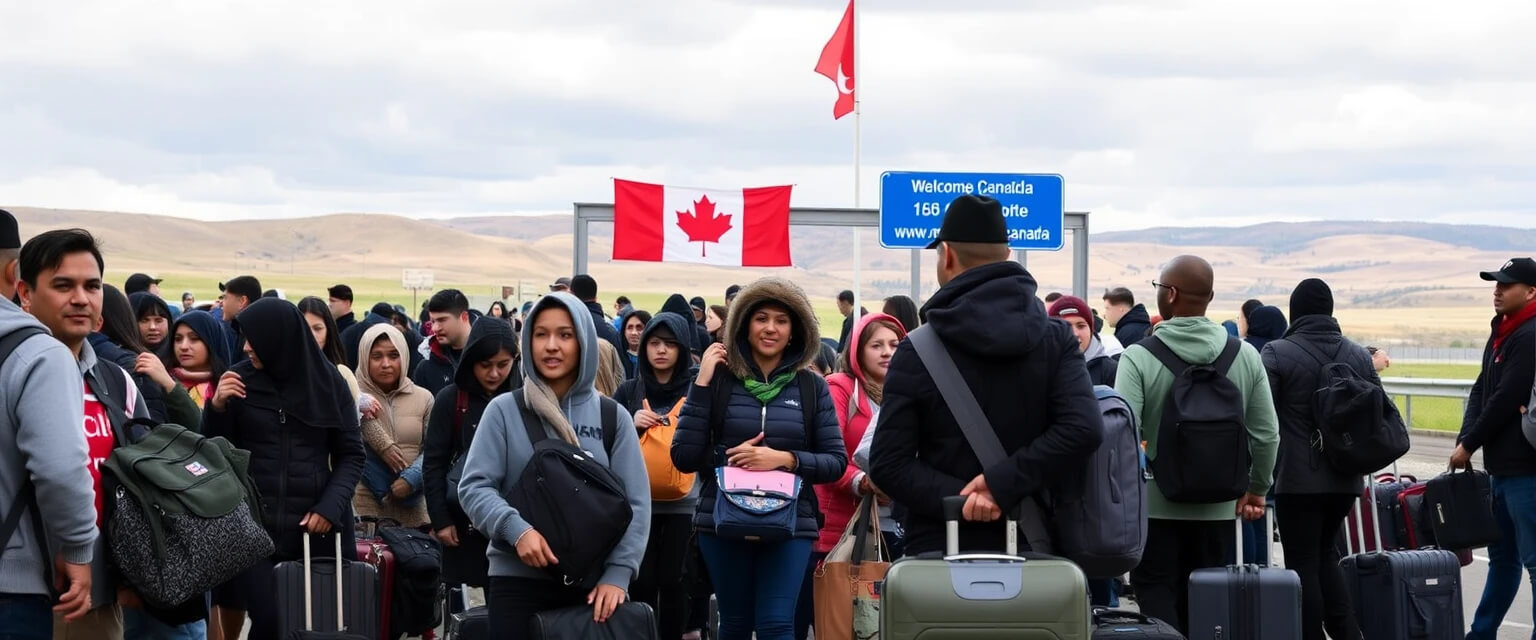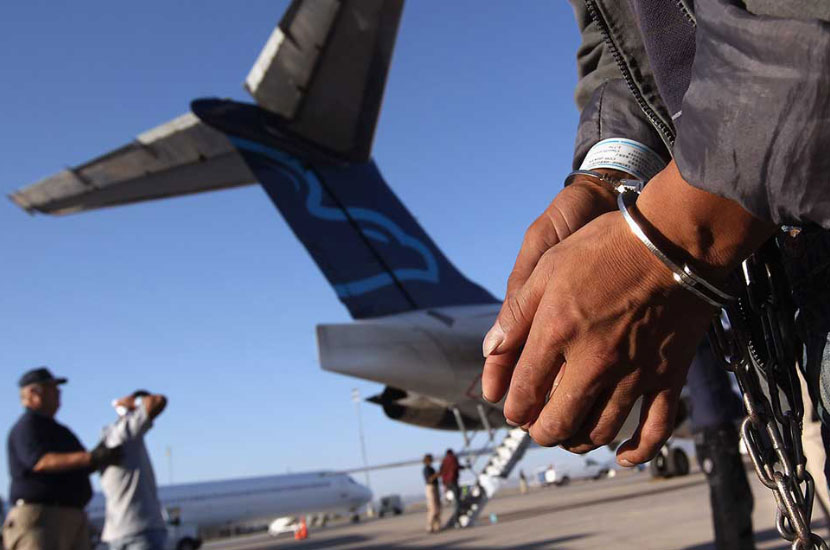Canada has long been celebrated as a beacon of opportunity, its immigration system lauded for efficiency and compassion. However, in 2025, this once-admired framework is buckling under the weight of unprecedented delays, leaving temporary residents, employers, and families in a state of limbo. Visa extensions, permanent residency applications, and spousal sponsorships are mired in backlogs, disrupting lives and livelihoods. Compounding the issue, systemic challenges such as staffing cuts at Immigration, Refugees, and Citizenship Canada (IRCC) and prolonged Labour Market Impact Assessment (LMIA) processing times at Employment and Social Development Canada (ESDC) are creating bottlenecks. This article delves into the human toll of these delays, uncovers systemic failures, explores hidden policy shifts, and examines the broader implications for Canada’s economy and global reputation.
The Immigration Backlog: A System Under Strain
The Canadian immigration system is grappling with a backlog that has reached critical levels. As of March 31, 2025, IRCC reported an inventory of 1,976,700 applications across citizenship, permanent residency, and temporary residency categories. While this figure reflects a slight decrease from February’s 2,029,400, it remains a daunting challenge for a system designed to process applications efficiently.
Processing Times: A Growing Burden
Temporary residents face particularly acute challenges. According to IRCC’s processing update on May 13, 2025, wait times for key application types have surged:
- Visitor Visa Extensions (Visitor Record): 169 days, up from 140 days in April 2025 and 125 days in March 2025.
- Study Permit Extensions: 234 days, a sharp increase from 220 days in April and 116 days in March.
- Work Permit Extensions: 237 days, compared to 227 days in April and 115 days in March.
- Spousal Sponsorship (Outside Quebec): 29 months, up from 24 months in March 2025.
- Spousal Sponsorship (Quebec): 36 months, slightly up from 35 months in March.
These delays are not mere inconveniences; they represent months or even years of uncertainty for applicants. For temporary residents, the lack of guaranteed outcomes exacerbates the stress, as they wait to learn whether their applications will be approved or rejected.
Systemic Failures Driving Delays
Several factors contribute to the backlog. High application volumes, driven by Canada’s reputation as a desirable destination, have overwhelmed IRCC’s capacity. Additionally, the complexity of assessments—particularly for LMIAs and spousal sponsorships—requires meticulous review, further slowing the process. The January 2025 announcement of 3,300 job cuts at IRCC has raised concerns about diminished processing capacity. While the government has not explicitly linked these cuts to delays, experts argue that reduced staffing inevitably exacerbates wait times.
“The IRCC job cuts are a red flag. You can’t slash thousands of positions in a system already stretched thin and expect it to function smoothly,” said Kamal Deep Singh, a Regulated Canadian Immigration Consultant (RCIC).
Temporary Residents: Lives in Limbo
Temporary residents—comprising international students, temporary workers, and visitors—are among the hardest hit by these delays. As of the end of the first quarter of 2025, Canada was home to 3,020,936 non-permanent residents, a slight decline from the previous quarter but still significantly higher than the 2,729,771 reported in Q1 2024. This population, critical to Canada’s economy and cultural diversity, faces a precarious existence due to prolonged processing times.
International Students: Economic Contributors at Risk
International students contribute approximately $22 billion annually to Canada’s economy, supporting jobs, tuition revenues, and local businesses. However, the 234-day wait for study permit extensions threatens their academic progress and legal status. Students risk falling out of status, which can jeopardize their ability to continue studies or work part-time, a critical source of income for many.
For example, a student at the University of Toronto, who requested anonymity, shared their experience: “I applied for my study permit extension seven months ago. I’m still waiting, and I can’t work or plan my next semester. It’s like my life is on hold.” Such stories highlight the personal toll of delays, as students face financial strain and uncertainty about their future in Canada.
Temporary Workers: Vital to Key Sectors
Temporary workers, particularly in healthcare, agriculture, and construction, are essential to Canada’s economy. Yet, the 237-day wait for work permit extensions leaves many in financial peril. Workers risk losing their jobs or falling out of status, forcing some to return to their home countries. This is particularly concerning in sectors like healthcare, where Canada faces a shortage of nurses and support staff.
A report from the Canadian Federation of Independent Business (CFIB) noted that 65% of small businesses in labour-intensive sectors struggled to fill vacancies in 2024 due to immigration delays. The prolonged wait times for work permits and LMIAs exacerbate this issue, leaving employers and workers in a bind.
Visitors: Unable to Plan Ahead
Visitors seeking to extend their stay in Canada face a 169-day wait for visa extensions. This affects tourists, family visitors, and those awaiting other immigration pathways. The uncertainty discourages family reunification and tourism, sectors that contribute significantly to Canada’s economy. For instance, a visitor from India shared with CBC News: “I came to see my daughter, but I can’t stay longer because my extension is taking forever. I might have to leave before I see my grandchild born.”
LMIA Delays: A Bottleneck for Employers and Workers
The Labour Market Impact Assessment (LMIA) process, managed by ESDC, is a critical step for employers hiring foreign workers through the Temporary Foreign Worker Program (TFWP). A positive LMIA confirms that no Canadian citizen or permanent resident is available to fill a job, allowing the worker to apply for a work permit. However, LMIA processing times have become a significant bottleneck.
LMIA Processing Times
As of April 2025, processing times for LMIAs vary by stream:
- High-Wage and Low-Wage Streams: 61 business days, down slightly from earlier estimates but still a hurdle for employers.
- Global Talent Stream: 8 business days, a faster option for tech and innovation roles.
- Permanent Residence Stream: 214 business days, or over seven months, for applications supporting permanent residency.
These delays stem from high application volumes, complex assessments, and seasonal demand, particularly in agriculture. Low-wage positions in regions with high unemployment face additional scrutiny, extending processing times to 53 business days or more. Employers must submit detailed documentation, including proof of recruitment efforts, job descriptions, and wage standards, and incomplete applications can trigger further delays.
Impact on Employers and Workers
The prolonged LMIA process disrupts hiring plans, particularly in labour-short sectors. For example, in agriculture, seasonal workers are critical during planting and harvest seasons, yet delays can leave farms understaffed. In healthcare, hospitals struggle to fill roles for nurses and personal support workers, exacerbating patient care challenges.
For workers, the consequences are equally severe. A positive LMIA is only the first step; they must then wait an additional 237 days for work permit processing. This extended timeline risks job offers being withdrawn or workers falling out of status. Some workers, unable to sustain the wait, leave Canada, aligning with what experts describe as a government strategy to encourage voluntary departures.
Government’s Quiet Push for Voluntary Departures
Canada’s 2025–2027 Immigration Levels Plan targets 395,000 permanent residents in 2025, prioritizing economic immigrants and provincial nominees. However, policy shifts suggest a deliberate effort to reduce the temporary resident population. Key indicators include:
- Caps on Study Permits: A limit of 550,162 study permits in 2025 restricts opportunities for international students.
- Pause in Express Entry Draws: An unprecedented suspension of Express Entry draws from March 21 to May 2025 limits pathways to permanent residency.
- Prolonged Processing Times: Extended waits for visa extensions and LMIAs create uncertainty, potentially discouraging temporary residents from staying.
Immigration experts argue that these measures are not coincidental. “The government is using delays as a soft push for temporary residents to leave,” said a Toronto-based immigration lawyer. “By making it harder to stay, they’re hoping people will give up and go home.” This strategy risks alienating talent and undermining Canada’s reputation as a welcoming destination.
Spousal Sponsorship: Families Torn Apart
The human toll of Canada’s immigration crisis is most poignant in the realm of spousal sponsorship. Canadian citizens and permanent residents sponsoring their spouses face wait times of 29 months outside Quebec and 36 months in Quebec, up from 24 and 35 months in March 2025. These delays are tearing families apart, forcing couples to endure years of separation.
Emotional and Financial Strain
The prolonged waits impose significant emotional and financial burdens. A Cape Breton resident, quoted by CTV News, shared their anguish: “All I want is to start a family with my spouse from Iran, but the visa denial and delays are breaking us.” Such stories are common, as couples face costly legal battles or rely on temporary visits that offer little stability.
In Quebec, additional provincial requirements exacerbate delays. Applicants must navigate both federal and provincial processes, adding months to the timeline. The backlog for spousal sponsorships, defined as applications exceeding 12 months, underscores a system struggling to uphold Canada’s commitment to family reunification.
Hidden Truths: A Shift in Priorities?
Some analysts suggest that the delays in spousal sponsorship reflect a broader shift in Canada’s immigration priorities. By prioritizing economic immigrants, the government may be de-emphasizing family reunification, a cornerstone of its humanitarian legacy. This shift has sparked debate among advocacy groups, who argue that Canada’s values are being compromised.
Broader Implications for Canada’s Economy and Reputation
The immigration crisis has far-reaching consequences for Canada’s economy and global standing. International students, who contribute $22 billion annually, may choose other destinations like Australia or the UK, where processing times are shorter. Temporary workers, vital to sectors like healthcare and agriculture, may seek opportunities elsewhere, exacerbating labour shortages.
Economic Impact
The CFIB estimates that immigration delays cost Canadian businesses $3.5 billion annually in lost productivity and hiring expenses. Small businesses, which rely heavily on temporary workers, are particularly affected. In agriculture, delays in the Seasonal Agricultural Worker Program (SAWP) threaten crop yields, while in healthcare, staffing shortages strain an already overburdened system.
Global Reputation at Stake
Canada’s reputation as a welcoming destination is under scrutiny. Posts on X reflect growing frustration among temporary residents, with some calling the system “broken” and others warning prospective immigrants to reconsider. A 2024 OECD report ranked Canada’s immigration processing times among the slowest in developed nations, a stark contrast to its former status as a model of efficiency.
Potential Solutions and the Path Forward
Addressing Canada’s immigration crisis requires a multifaceted approach. Experts propose several solutions:
- Increased Staffing and Technology: Reversing IRCC job cuts and investing in automated processing systems could reduce backlogs.
- Streamlined LMIA Processes: Simplifying documentation requirements and prioritizing high-demand sectors could expedite LMIA approvals.
- Policy Transparency: Clear communication about immigration priorities could reduce uncertainty for temporary residents.
- Regional Flexibility: Tailoring LMIA assessments to regional labour market needs could address disparities in processing times.
The government must also balance its economic goals with its humanitarian commitments. Restoring faith in the immigration system will require addressing the human toll of delays and reaffirming Canada’s legacy as a land of opportunity.
Conclusion
Canada’s immigration system, once a global exemplar, is at a crossroads. The backlog of nearly 2 million applications, coupled with prolonged processing times for visas, LMIAs, and spousal sponsorships, is testing the resilience of temporary residents, employers, and families. The government’s apparent strategy of encouraging voluntary departures risks alienating talent and tarnishing Canada’s reputation. As the nation navigates its 2025–2027 Immigration Levels Plan, it must address systemic failures, restore processing capacity, and uphold its commitment to compassion and efficiency. For the 3 million temporary residents and countless others, the stakes are deeply personal, and the need for action is urgent.





























0 Comments